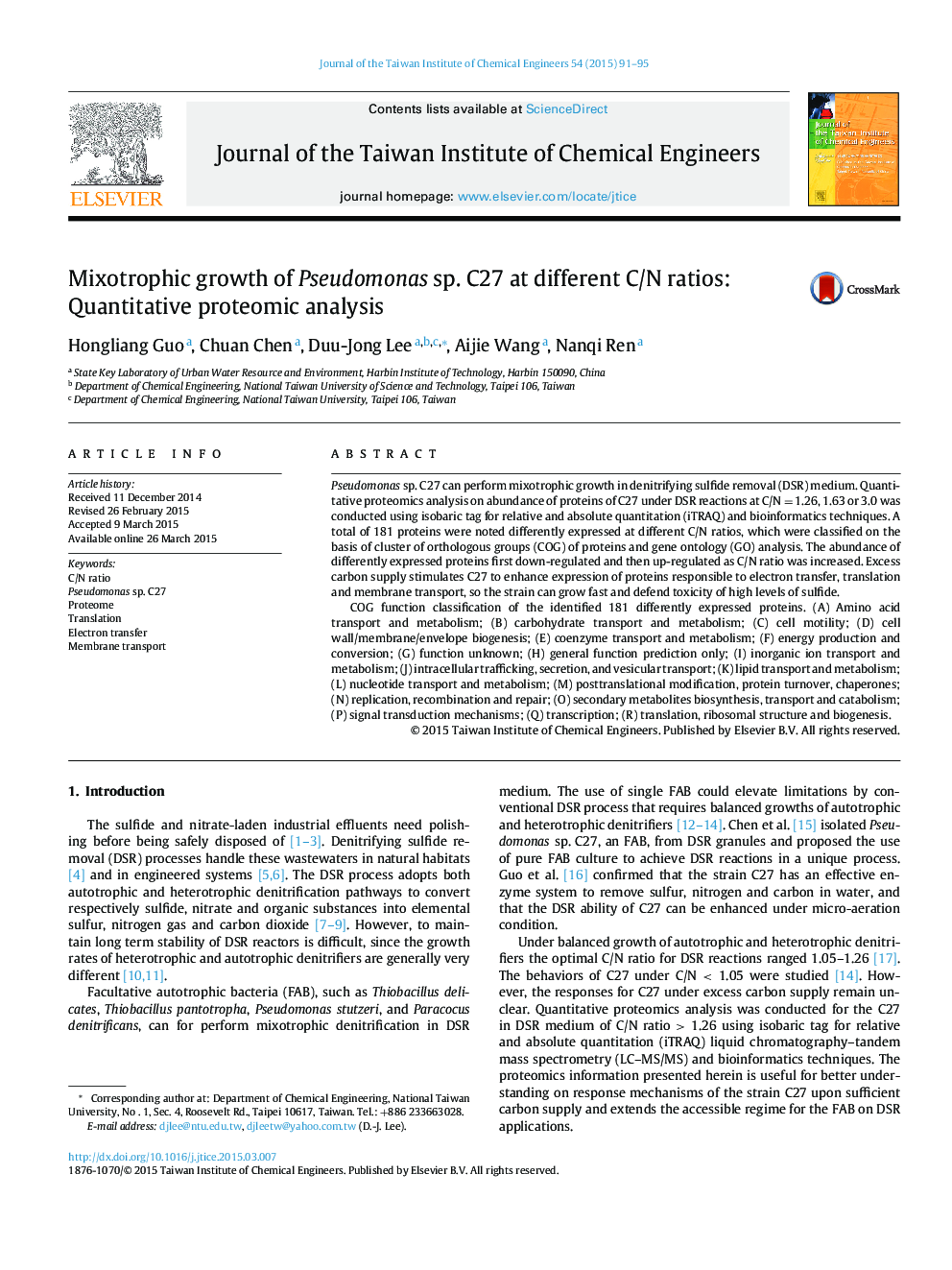| Article ID | Journal | Published Year | Pages | File Type |
|---|---|---|---|---|
| 690827 | Journal of the Taiwan Institute of Chemical Engineers | 2015 | 5 Pages |
•Quantitative proteomics analysis on C27 under mixotrophic growth was conducted.•A total of 181 proteins were noted differently expressed at different C/N ratios.•Abundance of differently expressed proteins changed with C/N ratio.•Proteins to electron transfer, translation and membrane transport were expressed.
Pseudomonas sp. C27 can perform mixotrophic growth in denitrifying sulfide removal (DSR) medium. Quantitative proteomics analysis on abundance of proteins of C27 under DSR reactions at C/N = 1.26, 1.63 or 3.0 was conducted using isobaric tag for relative and absolute quantitation (iTRAQ) and bioinformatics techniques. A total of 181 proteins were noted differently expressed at different C/N ratios, which were classified on the basis of cluster of orthologous groups (COG) of proteins and gene ontology (GO) analysis. The abundance of differently expressed proteins first down-regulated and then up-regulated as C/N ratio was increased. Excess carbon supply stimulates C27 to enhance expression of proteins responsible to electron transfer, translation and membrane transport, so the strain can grow fast and defend toxicity of high levels of sulfide.COG function classification of the identified 181 differently expressed proteins. (A) Amino acid transport and metabolism; (B) carbohydrate transport and metabolism; (C) cell motility; (D) cell wall/membrane/envelope biogenesis; (E) coenzyme transport and metabolism; (F) energy production and conversion; (G) function unknown; (H) general function prediction only; (I) inorganic ion transport and metabolism; (J) intracellular trafficking, secretion, and vesicular transport; (K) lipid transport and metabolism; (L) nucleotide transport and metabolism; (M) posttranslational modification, protein turnover, chaperones; (N) replication, recombination and repair; (O) secondary metabolites biosynthesis, transport and catabolism; (P) signal transduction mechanisms; (Q) transcription; (R) translation, ribosomal structure and biogenesis.
Graphical abstract Figure optionsDownload full-size imageDownload as PowerPoint slide
